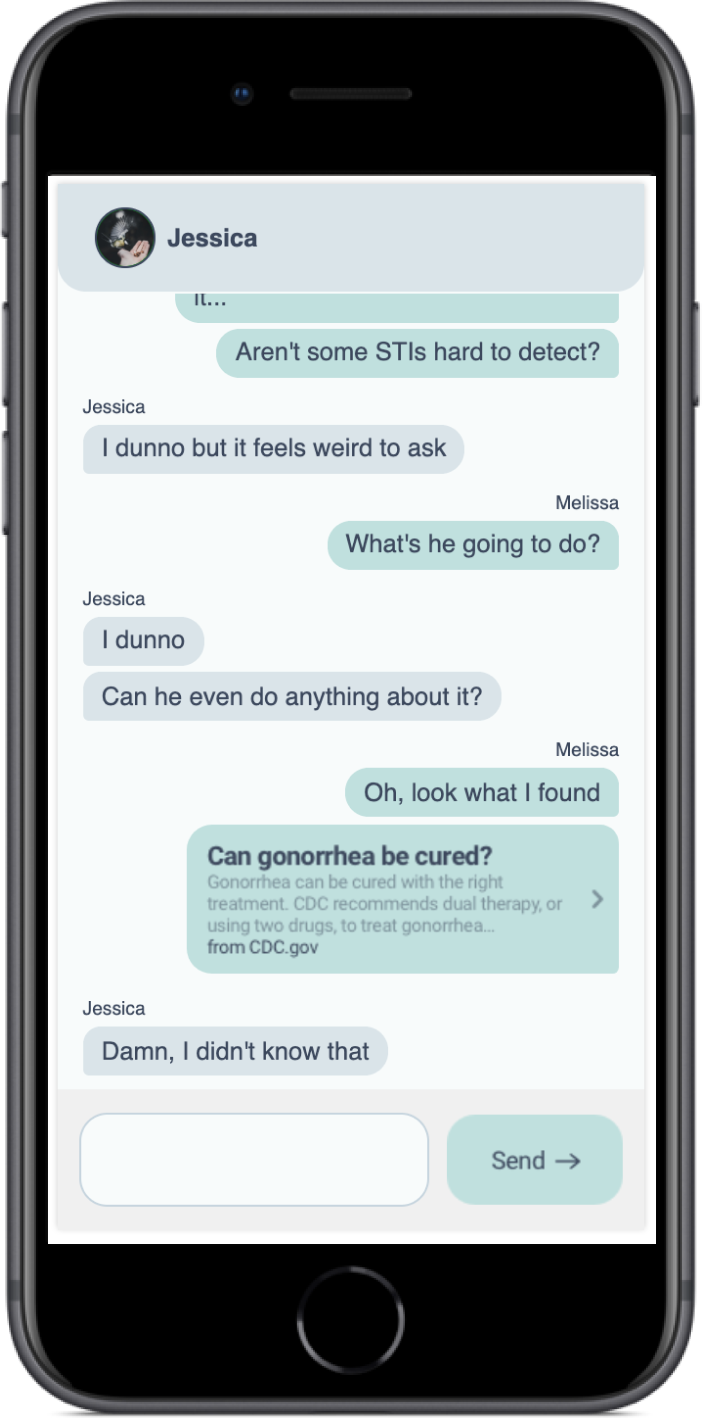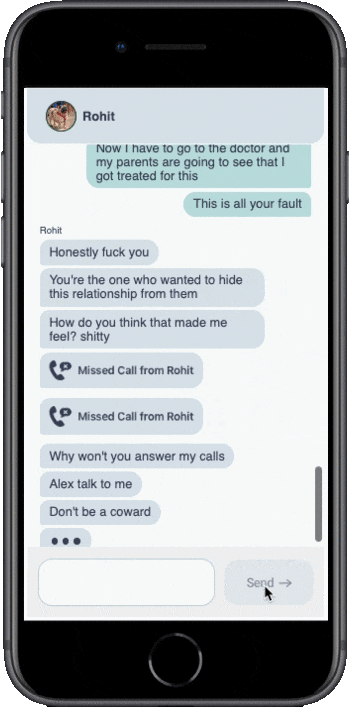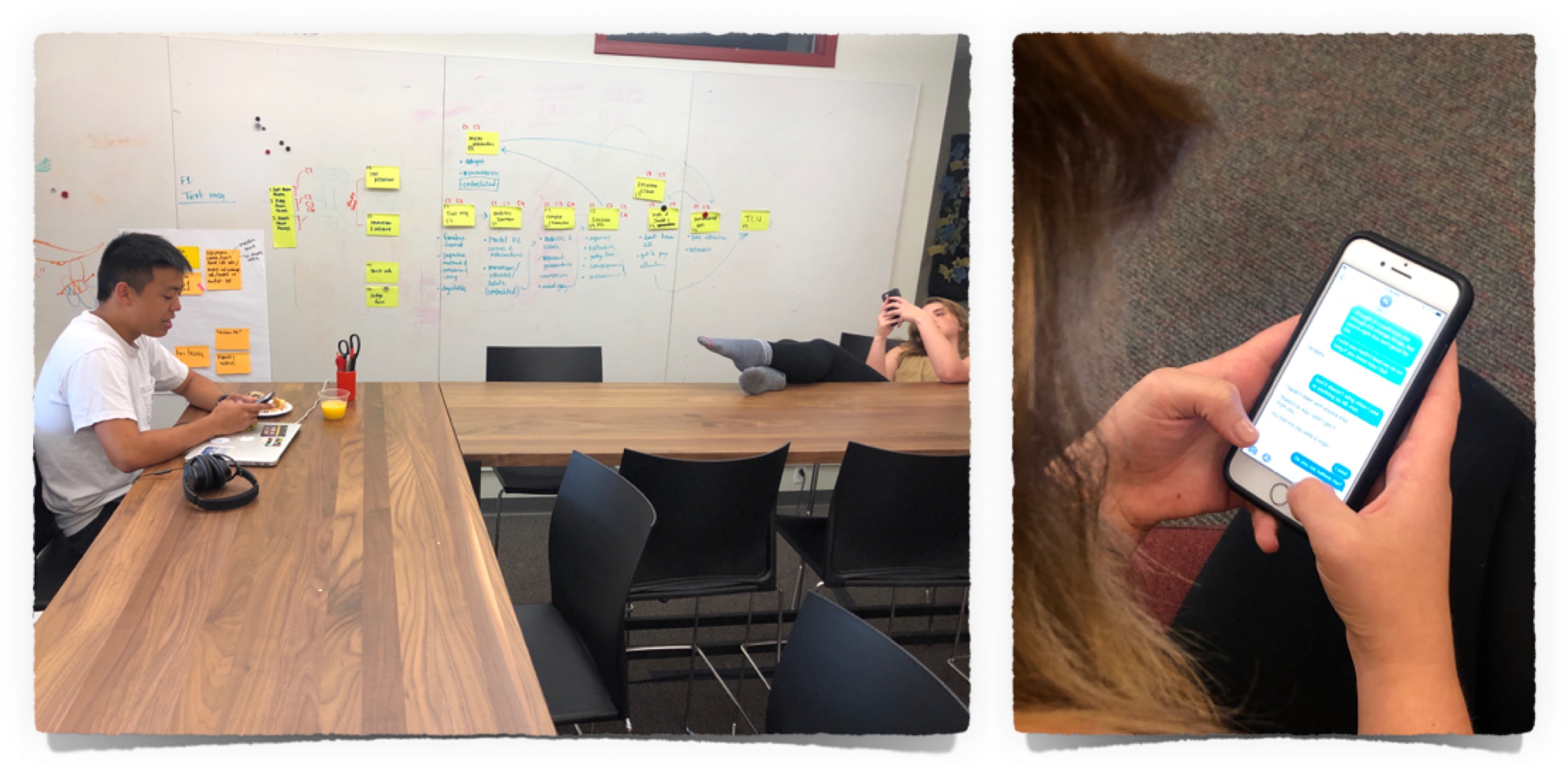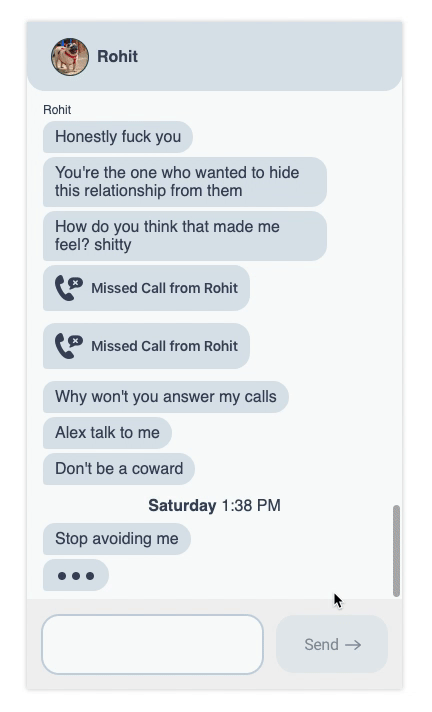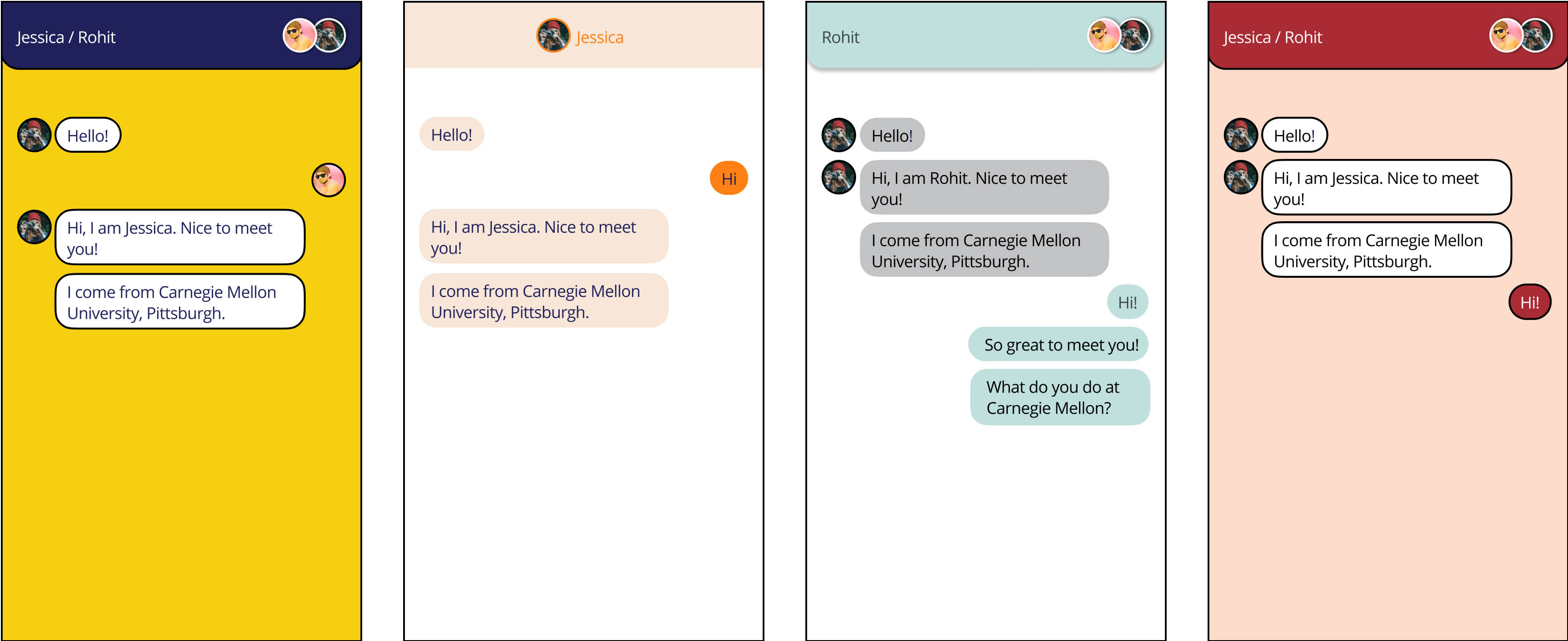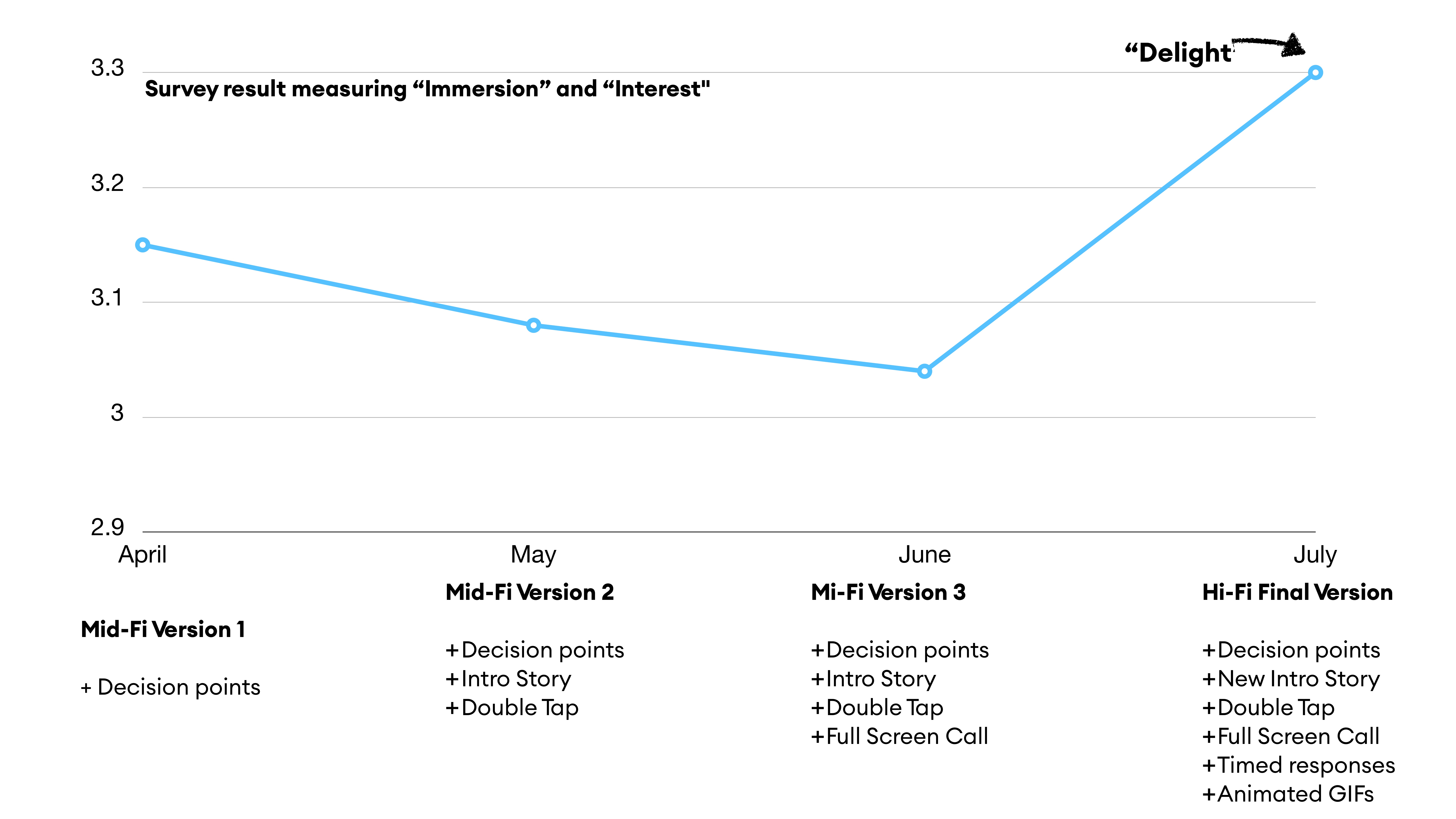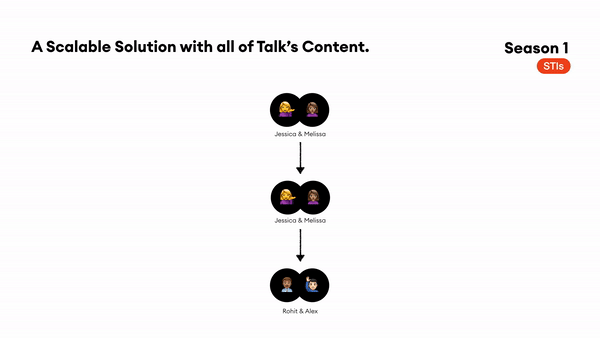Discovery
Generative research
Our initial research efforts were focused on gaining a better understanding of the existing digital and physical sex education space. We conducted an academic literature review, competitive analysis, and user interviews with various stakeholders.
We also conducted interviews with Talk students and Talk parents to understand what Talk’s current sex education experience was. We knew that Talk was successful in providing high quality sex education to students, and wanted to understand what elements of the existing experience could be replicated in a digital space.
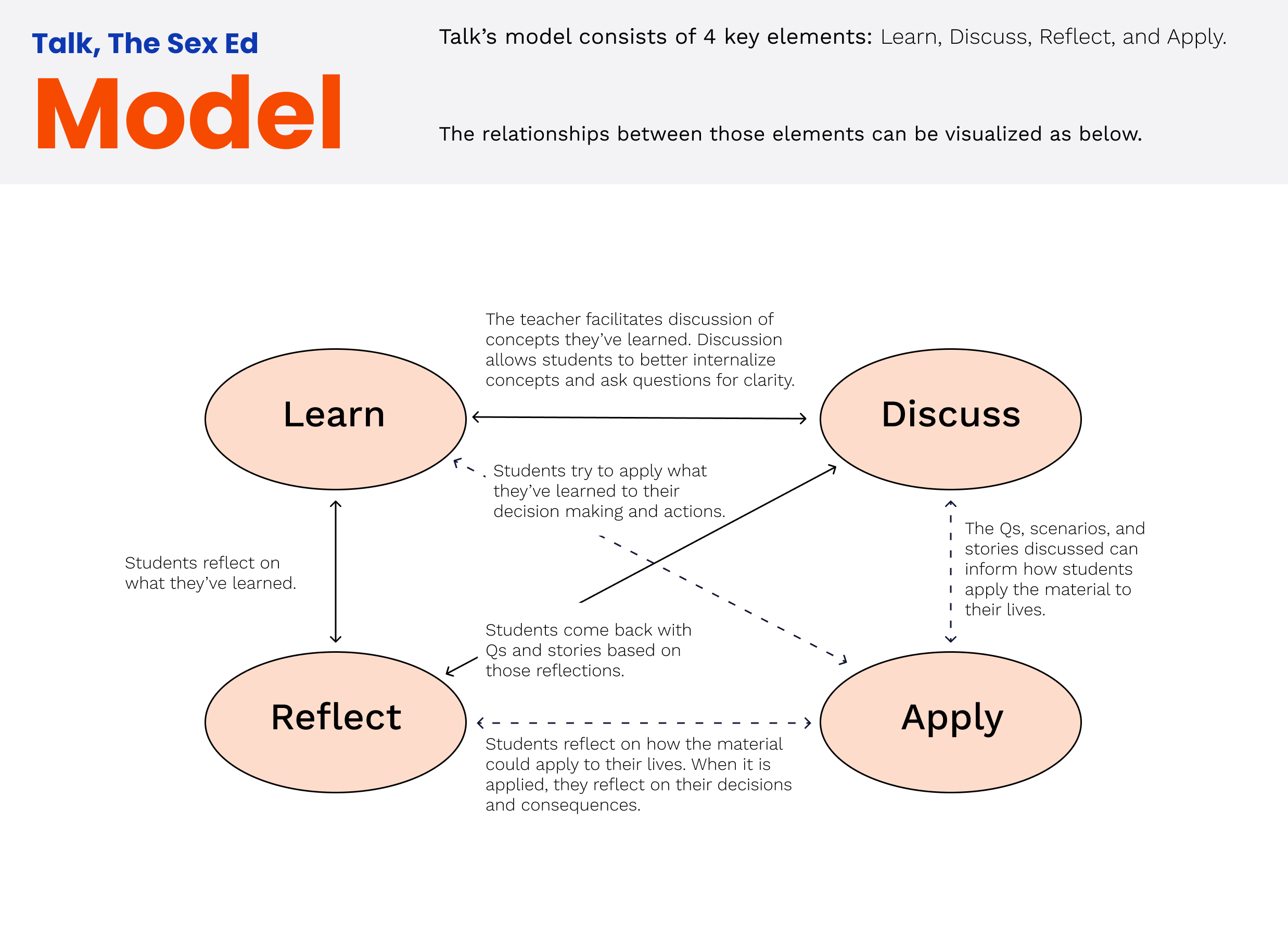
We built a diagram to showcase Talk's current educational model.
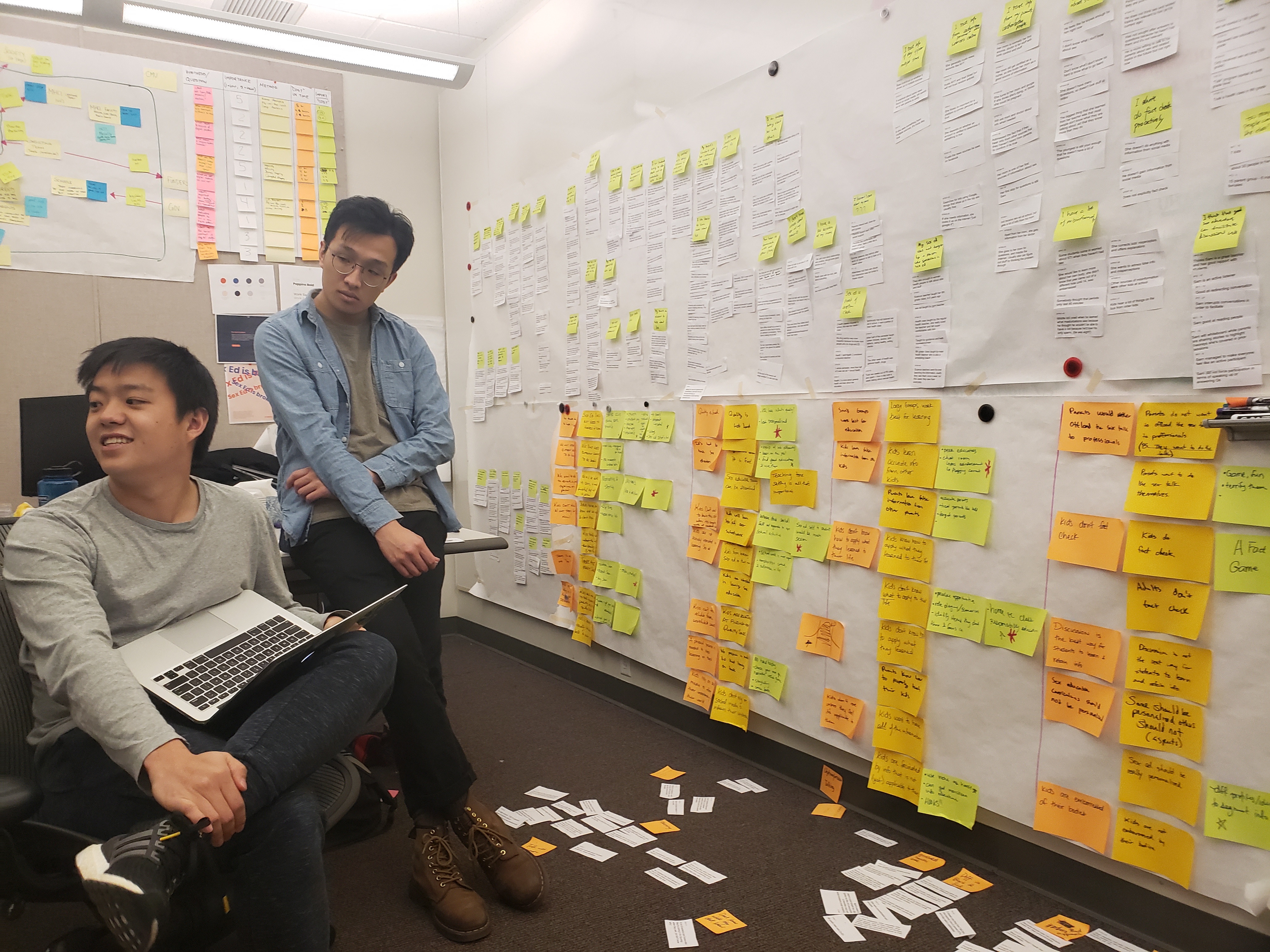
We created an affinity diagram to organize our responses.
Research through rapid prototyping
As we built our understanding of the problem space, we began rapidly prototyping ideas. We built low fidelity prototypes for the concepts we wanted to further explore. Then, we invited our target users to use the prototypes and provide feedback. We built a wide variety of different concepts.
Some ideas included a reflection tool to help teens know whether or not they were ready to have sex, a conversational user interface to help mediate conversation between parents and children, and also a digital sex education platform.
Ideation Methods: Reverse Assumptions, Crazy Eight Sketches, Storyboarding, Speed Dating, Rapid Prototyping.

How do students feel about learning how to talk to parents about sex? (answer: not great!)
Insights from our work
01 Stories are important
In the current Talk curriculum, educators tell stories and anecdotes to highlight misconceptions about sex. These stories help to engage students in the material, and serve as carriers for increased conversation. We found that students enjoyed this part of the class the most.

I built a customer journey map from our interviews to help us discover this insight.
02 Teens reject overt online education
One simple prototype taught us a valuable lesson. In this prototype, I built a mock online sex education experience, where students watched a video, and then completed a quiz. We weren't expecting anything surprising, but when we tested this prototype, participants would skip the educational video. If students did not watch an educational video in an experimental setting, there was no way they were going to watch educational videos in their free time. This insight helped us to pivot towards solutions that presented educational information in less overt ways.
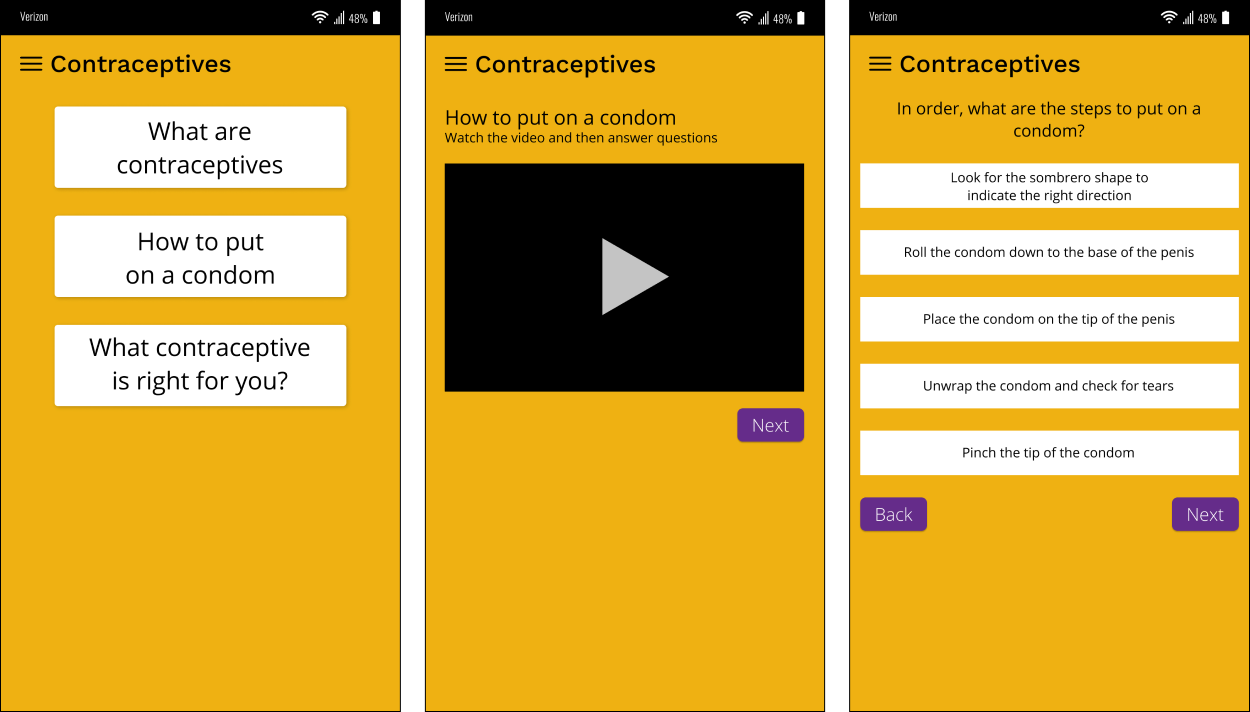
3 simple lo-fidelity screens taught us that we needed to hide educational material from students.
"I didn't watch the video because I know everything already" - Participant who did not know everything.
03 Teens don't know what they don't know
Something that we heard time and time again during our interviews with students and educators was that students believed they already knew what they needed to know about sex. As result, they weren’t motivated to fill knowledge gaps, because they don’t know that the knowledge gaps exist.
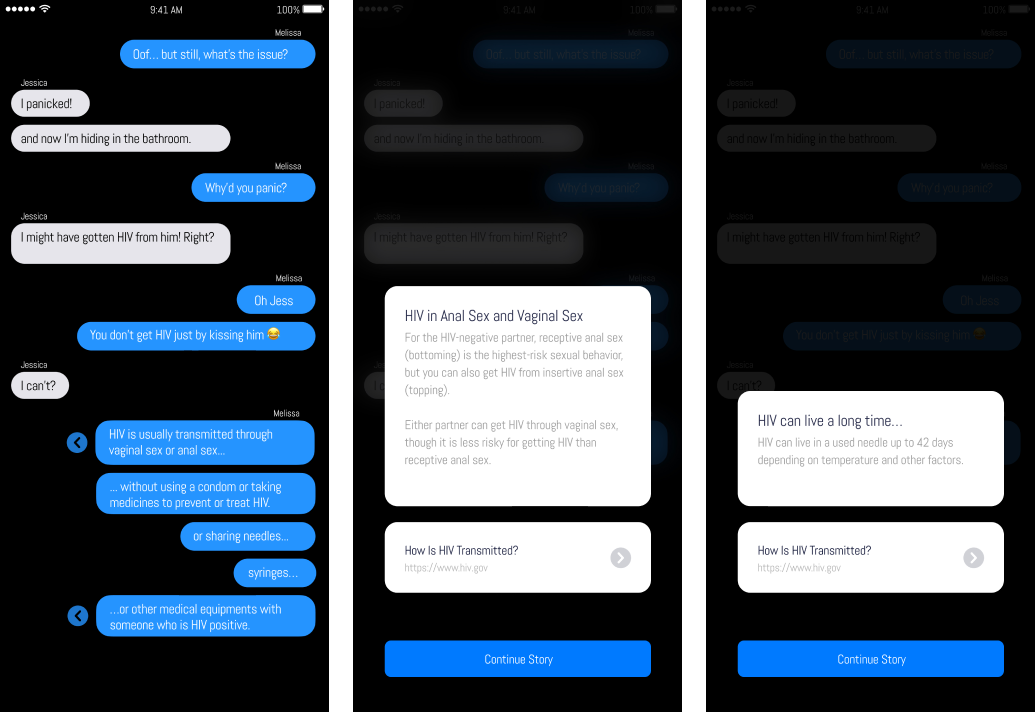
Students became interested in learning more once they realized there was information they didn't know.
"I didn't know that HIV could be transmitted through needles"
The direction forward
One of our lo-fidelity prototypes, an interactive narrative prototypes about HIV, not only taught students new information, but also kept students engaged throughout the story. Based on the feedback we received from users and business constraints to the problem, we decided to move forward with the idea.
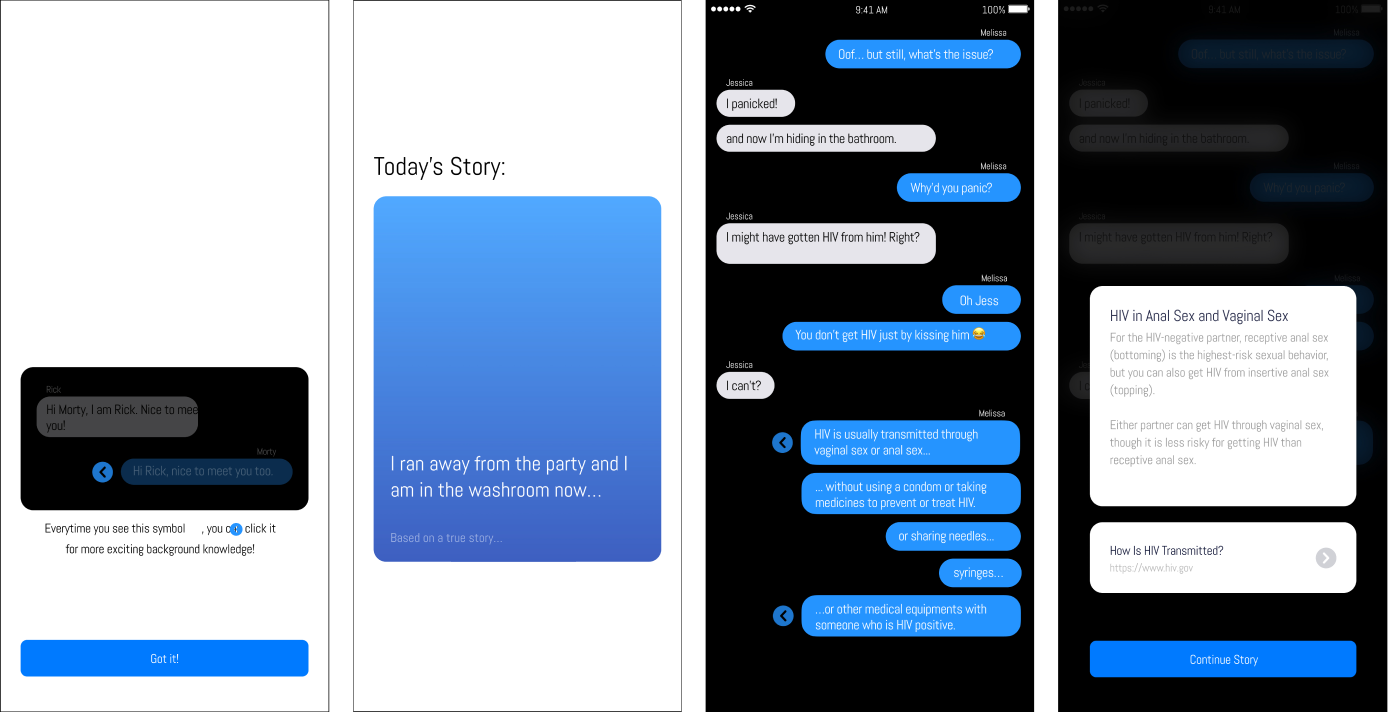
"I didn't know that HIV could be transmitted only in these ways"

